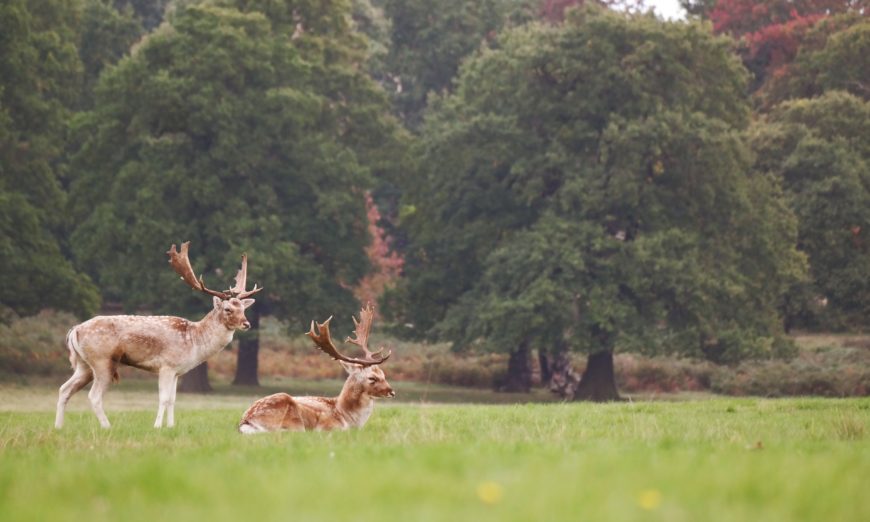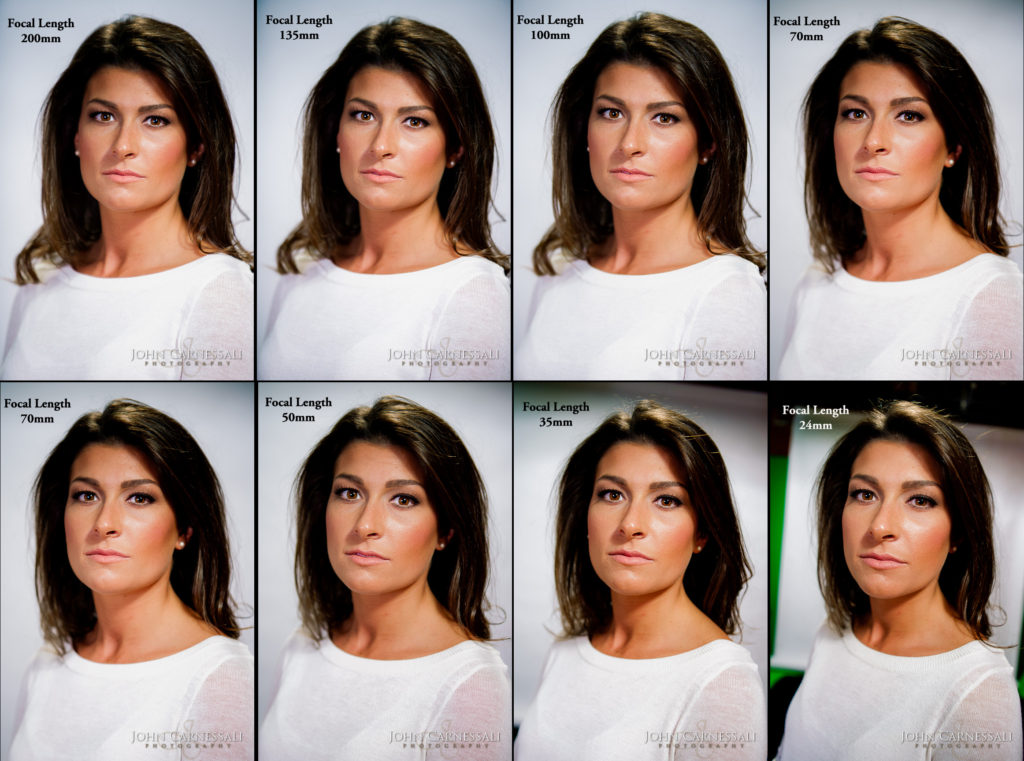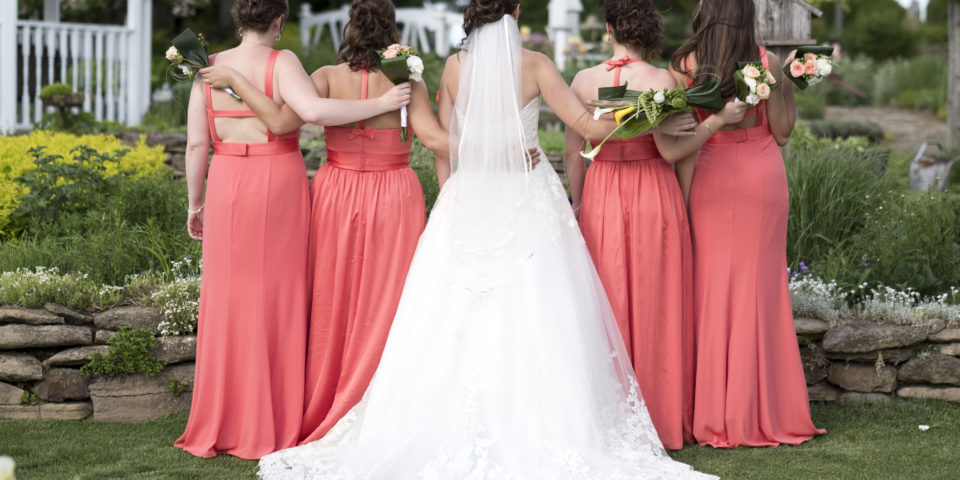This phrase is one of those heard frequently by photographers and videographers implying some incredible black magic at work, only available to members of some arcane sect. Not quite. Lens compression, or perspective compression, as it is sometimes called is a useful optical effect that appears to make distant subjects stack up close together.
When used effectively, lens compression can create a sense of diminished space, of crowding and of limited freedom. It can create viewer tension and even discomfort. Used on the other end, it creates the illusion of greater than normal space between subjects and longer visual lines. Compression is a misnomer, because the same optical effect can be used to create the illusion of space where limited space actually exists.
Let’s look at a couple of examples.
Have you ever viewed photographic ads for real estate, showing rooms in a home or apartment where the location looked incredibly spacious but upon visiting discovered that the space was actually very tight? Professional Cairns Real estate photographer use lens and camera placement to create the illusion of space. The room perspective is expanded by establishing a vanishing point that appears very far away. I remember seeing a photo of a hotel room in New York City that looked quite nice but upon arriving discovered a 10×8 room with barely the room to trip over oneself. The photographer didn’t lie, but by leveraging the power of perspective expansion, he or she created an image that made the room much more pleasant than it actually was.
Have you ever seen those photographs or film clips of the wind farms in California east of the Bay Area? They always look like the giant wind propellors are stacked right on top of each other. I did the drive back to Silicon Valley from Modesto and drove right through that area. Those enormous entities are quite far apart and consume hundreds of square miles of land. The photographer did not lie, he or she simply used perspective compression to achieve a look that implied a very busy space when there was not one at all.
You can do this too. To make the illusion of distance, shoot with a wide or very wide angle lens and put one of the repeating elements very close to one of the edges of the frame. Since a wide angle lens sees a very wide field of view it visually pushes all things away from the lens. The sense of stretch occurs primarily with subjects that are close to the lens, and diminishes as the subject is farther away.
To make the illusion of things piled on top of one another, shoot a repeating pattern of subjects that are some distance away with a telephoto lens. Since you are performing an act of magnification, it appears that subjects, light poles are a good example, are very close together. You will find that this works best when your closest subject is rather distant, and its peers closer to it, than you are to it.
Both are simply illusions. When I first started out, I had a photography text that showed the same scene, taken from the same position with an ascending set of focal lengths. I believe that the image set was courtesy of Nikon. The first image, shot with what I think was an 8mm fisheye had a field of view of 220 degrees, it could see behind itself. The geometric distortions were huge, but it made the world look enormously huge. Moving up the focal length range to where it ended at 800mm as I recall, you got a very good sense of what different focal length lenses would do for you presuming the same initial position.
The example below, courtesy of Nikon USA, is very useful because it demonstrates the different fields of view of different focal lengths without changing the photographic position.
This differs from most representations comparing the look of focal lengths because the distance between the camera and the subject has not changed at all. At 18mm we get this sense of great expanse while at 300mm, we get the feeling of a tight scene. In the 300mm shot, it looks like the trees are right up behind the barn. In the 18mm shot, the front fence looks like it is miles away from the barn. The illusion of space or lack thereof is in your mind. If you were to zoom in to the 18mm image, you would find that the apparent distance between the barn and the trees behind it is EXACTLY the same as what we see at 300mm when the camera to subject distance does not change. Yet, one image feels expansive and the other feels a bit crowded. Thus no focal length actually records subjects at different distances from each other when they are static, but they do create this illusion based on field of view.
More often, different focal lengths are demonstrated where the subject size in the frame does not change when the focal length changes. Call this the “reverse zoom” effect. This image, courtesy of johncarnessalli.com gives us a great example of what I am speaking of. The photographer changes the camera to subject distance with each change in focal length to maintain consistent frame coverage. Starting at 24mm and up through 70mm, the camera to subject distance is so tight, we see perspective exaggeration of the face making the nose look bigger. It’s not flattering or subject pleasing. Particularly when it comes to shots such as corporate headshot photos that are going to be on display to the public, you want to make your subjects look the best that they can. To me, even 70mm is too short, I prefer headshots with nothing shorter than a 100mm on a full frame. You are the artist you get to decide, but I cringe whenever I hear anyone refer to a 50mm as a portrait lens. It’s not. Move along.
If we shoot a portrait of a person where the head fills the frame with an ultrawide, the lens must be so close that we get the sense of stretching because of the way the vanishing point is created. The photo is unflattering having an enormous nose on a narrow receding elliptical head. Move up to 200mm and keep the head size the in the frame identical and now the face looks flattened with the eye orbits and ears seemingly closer to the front of the nose. While often characterized as perspective compression it is not, we are simply leveraging the field of view and subject distance to alter the perception of the viewer. It’s another illusion because people’s faces do not change dimension depending on camera lens focal length, but APPEAR to depending on focal length and distance from the lens to the subject.
Why is it not optimal to shoot a headshot with a 24mm lens but discover that this is a good focal length for groups in tight spaces? It has everything to do with the illusion of compression and expansion. Why does a distance shot of an eagle with a 600mm lens make it look like the eagle is right up against the background. It’s an illusion.
How you as a creative use your illusions, with apologies to Guns N Roses, can help you define the look and feel of an image and write the framework for the story you want the photo or video to tell. There is not a right or wrong, you decide on what you want to say and then say it. And enjoy the journey.
Until next time, peace.




